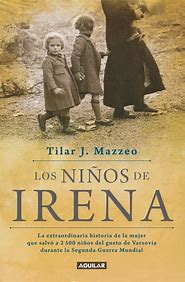When I first visited Poland, sometime around 2009, I thought it would be a vacation. My brother and sister-in-law, working with the U.S. State Department, had lived in Krakow for several years already, and had lived for a time in Wroclaw before that, and had witnessed the country’s integration into the European Union and its rapid second postcommunist transformation. Their two small children-twins and then not yet toddlers-were learning their first words in Polish, and my sister-in-law was the director of an international school located outside the city.
All three of us had grown up nominally Catholic, although none of us have ever had, I think, any particular interest in religion. Because Krakow, unlike Warsaw, escaped being bombed or razed into oblivion at the end of the Second World War, its Catholic heritage is everywhere in the Old Town architecture. It is a beautiful and in some ways still medieval city. But few areas of the city are as atmospheric as the historic Jewish quarter in Kazimierz, where tourists make pilgrimages to see Oskar Schindler’s factory and to see the winding streets where parts of Schindler’s List were filmed for Spielberg’s motion picture. On the other hand, if you want to imagine what the Warsaw ghetto looked like in the 1940s, there is no point in going to Warsaw. Only a small percentage of it remains there. The ghetto was razed in the spring of 1943. After the Warsaw uprising a little more than a year later, the rest of the city was leveled, and only ten percent of the buildings were left standing. Warsaw is essentially modern.
The year that I visited, the school was in the final stages of a major capital project, and the campus was being developed and surrounded by fencing. My sister-in-law spent her days, she joked, largely scolding local construction crews, and she had amassed a colorful arsenal of Polish profanity. The site had been rolling farmland for years, and at one edge of the property a wood had been left to grow up in the midst of the fields and, later, scattered suburban houses. Standing together at the edge of the copse, I ventured to ask idly who owned the forest and why it had clearly been left wild for decades. After a moment’s pause, she let out a sigh and said to me, “The trains to Auschwitz, you know, used to run not far from here. Not right hear, but in the area.”
There was nothing in the woods, just parkland, and in the beginning she used to walk there, she said. But the first of November in Poland is All Saints’ Eve, and everywhere in the country it is the tradition on that night to light candles on the graves of the dead. It is only on the first holiday at the school, when the roadside that skirted the edge of the woods was burning everywhere with candles, that she understood that something terrible had happened there.
Later, locals told her that it was 1945, at the end of the war, when the Red Army was driving back the retreating Germans. The arrival of the Red Army brought no joy in Poland. Few women-from schoolgirl to most ancient babcia-escaped being raped by Soviet soldiers that winter in Krakow. And few Germans who encountered Soviet troops ever made their way back across the border. Across Poland, there were hundreds of nameless massacres like this one. Under communist rule, no one would have dared light a candle in the forest, but things had changed now. There were still old men and especially old women who remembered. “It’s everywhere here,” my sister-in-law said sadly. “Poland is an unmarked graveyard, and what can you do except leave the past quietly buried?”
Comprehension Questions
1. Who is the author going to visit?
A. Her brother and sister-in-law
B. Her parents
C. Her best friends
A. to remember the end of World War 2
B. in memory of all the dead in Poland
C. to remember those who had suffered and died at the hands of the Soviet Army at the end of the Second World War
Your Thoughts
Vocabulary
4. List any vocabulary words below.

